
North American river otter, Lontra canadensis, in captivity. Learn the basics of river otter tracks and sign in this article, so you can track them in the wild.
They play, they slide, they run, they’re social, and they create sign that is easy to distinguish from other species. All of that makes this large, semi-aquatic member of the weasel family, the river otter, fun and rewarding to track. And the fact that this predator generally does not hunt small pets or raid chicken coops means most pet lovers and backyard farmers can love and admire it without conflicting feelings. Read these basics of river otter tracks and sign recognition, and you’ll be well equipped to identify them, should you encounter them along a river, stream, or beaver pond.
What’s a river otter?
With an adult weight of 15-30 lbs, this is one of the larger members of the weasel family (called mustelids). Here in New England, it is the largest. It ranges over much of the eastern and western US, and most of Canada, as you can see here. Like the other mustelids, river otters have long slender bodies with short legs. That physique lends itself to a kind of slinky-like locomotion on land, and you can see a brief clip of it here.
The semi-aquatic river otter spends about 75% of its time on land and 25% in the water. It prefers to dine on fish, but also eats crayfish, and occasionally small mammals and birds. It rests in burrows, dense shrubbery, under the root system of overturned trees, etc., so look for them along rivers and streams and around lakes and ponds, where there is a lot of forest and shrubby cover.
Otter tracks
Otters share many characteristics with their weasel family relatives. Like other mustelids, otter feet have 5 toes, claws, and a C-shaped palm pad. Sometimes only 4 toes show in the track, and sometimes the substrate (the snow, sand, mud, etc.) is so poor, that you can’t see the tracks clearly. Sometimes claw marks show, and sometimes they don’t. But if you can see the tracks clearly, you can easily narrow the diagnosis to either otter or fisher, a terrestrial mustelid relative.
It can be very difficult to distinguish otter from fisher based on the appearance of individual tracks…So difficult, in fact, that I’m not going to cover that. Fortunately for the tracker, there are behavioral clues: The otter is a social animal that loves to swim and slide, but does not climb trees. The fisher, in contrast, is a solitary, climbing animal that rarely swims or slides.
Otter slides
Otters often move by sliding: on ice, snow, mud, and even on fallen leaves. If the animal is moving down hill, the slide may appear uninterrupted for a long distance. But if the otter is sliding up hill – and they can indeed slide up hill – the slide will be punctuated with foot prints created as the animal propels itself forward (see photo to the right). It’s easiest to find otter slides on snow, where this is a preferred method of locomotion.
In contrast, the closely related fisher almost never slides, and when it does, the slide appears to reflect unintentional slipping on ice. You’ll know it when you see it. It gives the impression of a flailing animal, not a smooth and graceful slide.
Otter trail patterns
Despite their propensity for sliding, otters do sometimes run for long distances over snow, using the same basic gaits that fishers use. In deep, soft snow, both species move in what is called a 2-2 lope, producing pairs of tracks as seen in the left side of the photo below. In shallow or no snow, both species are more likely to move in a 3-4 lope or gallop, producing groups of 3 and 4 tracks. You can see examples in the photos below, but if you want to understand how they are moving to produce these patterns, I encourage you to check out one of the many excellent mammal tracking books for further reading.
Otters are playful and social, so sometimes you will find evidence of multiple otters simultaneously running and sliding. Females with young of the year spend the winter together, and sometimes groups of mature males hang out together.
Otter plunge holes and haul outs
These are where otters enter or leave the water, which they do quite frequently. Fishers almost never enter the water, however, so if the tracks lead into a stream or pond, it’s most likely an otter. On the other hand, otters don’t climb trees, so if the tracks disappear at a tree, it’s probably a fisher.
Otter scat
Fresh otter scats are often poorly formed blackish splats, but sometimes they are more tubular. As they decay, you can usually see either fish scales, or slightly reddish crayfish remains. You won’t confuse otter and fisher scat, because the latter (despite the name) generally does not eat fish and produce scats that look quite different. Otter scat can be confused with raccoon scats, and distinguishing between the two can be tricky business (pun intended), because raccoons do frequent waterways and happily consume fish and crayfish. Usually there are other associated tracks or sign to help you make the distinction.
If the scat is fresh, you might find urine near it, and you might notice evidence of rolling around in the soil or vegetation in the scatting location. This is probably scent marking behavior. More on that in some future post, perhaps.
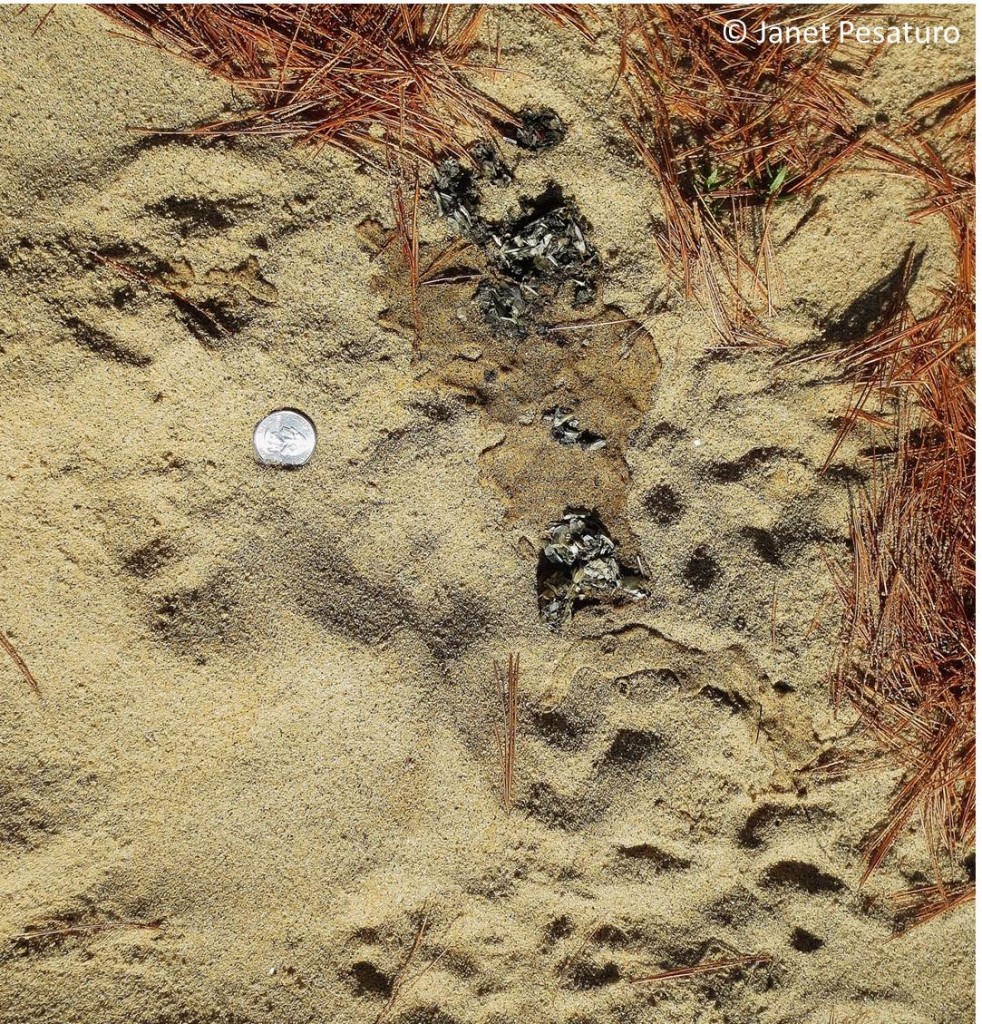
One or more otters left scat, urine, indistinct tracks, and evidence of rolling on this sand near a lake.
Shared on: Homestead Barn Hop #141, Backyard Farming Connection Hop #62, HomeAcre Hop #52, From the Farm Blog Hop, Natural Living Monday, Mostly Homemade Mondays, Thank Goodness it’s Monday, Teach Me Tuesday, Tuesdays with a Twist #41, 120th Wildcrafting Wednesday, Simple Life Sunday #3, Wordless Wednesday #79











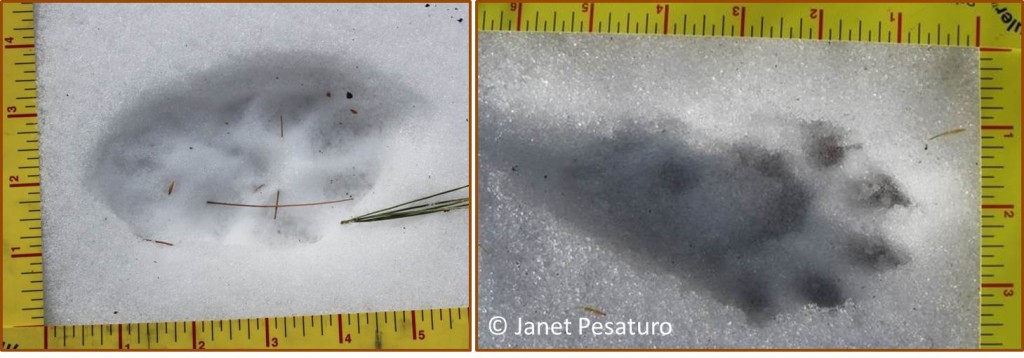

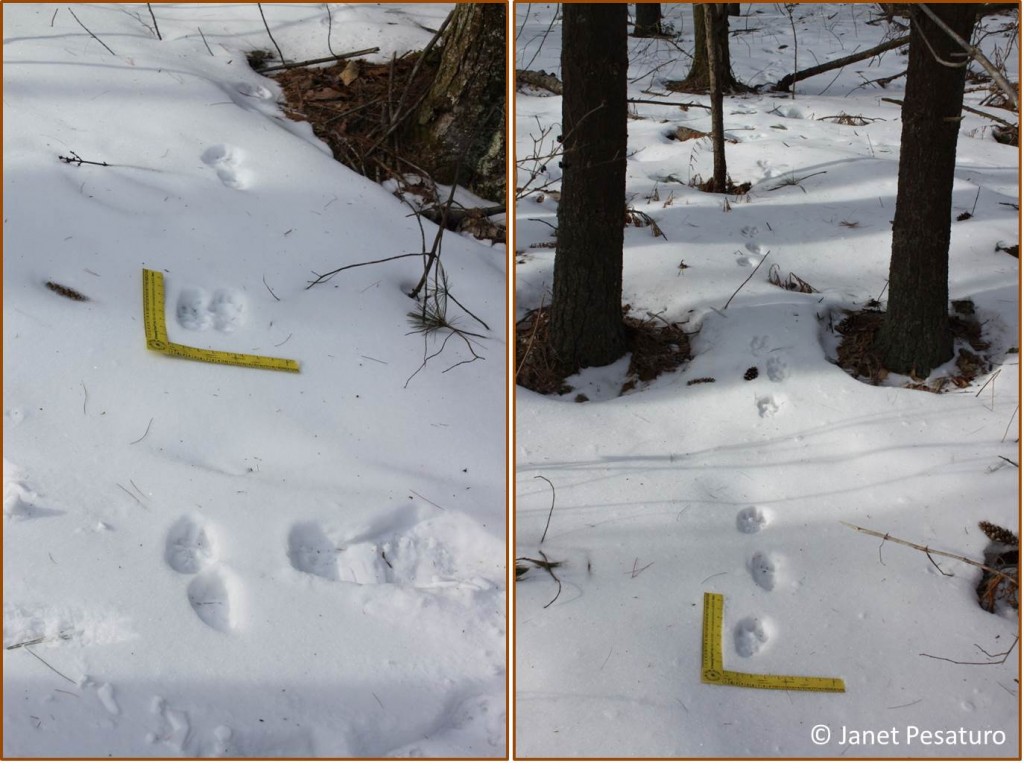
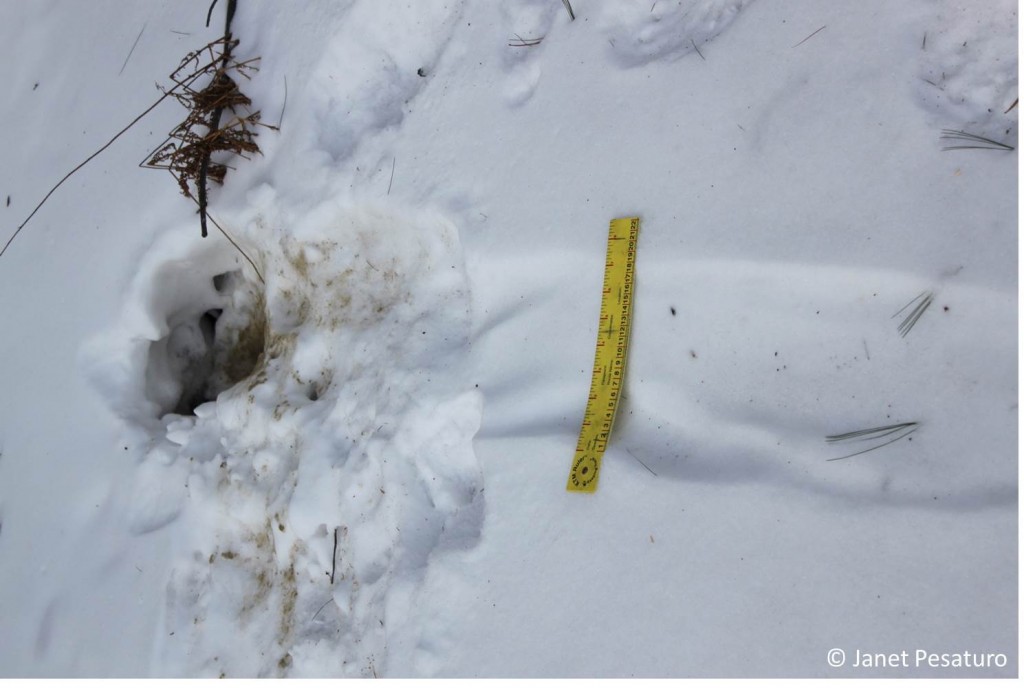
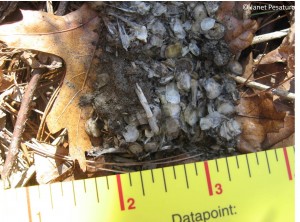

Interesting post – thank you!
Very interesting post! We have no water on our property except our well so I’ve only ever seen river otter at the zoo. They seem to be very social able creatures and are so cute to watch in the water habit at our zoo. I wonder if you got a fresh layer of storm with the storm that has hit a large portion of midwest and eastern states? Stay warm!
Hi Toni. Weird weather. Here in Mass. temp was in the 50’s and rainy, but extreme cold and wind are moving in tonight. So that layer of fluffy snow we got several days ago is now slush, and will be ice by morning. Thanks for stopping by. Be well!
snow! I meant snow, not storm x 2, lol.
Good stuff. Thanks for nudging me to get outside and go tracking!
Hope you do get some tracking in, this winter, Josh. Looks like there will be plenty of opportunity, with all these snow storms.
Thanks for stopping by and commenting on my Windsor Castle post! I’d love to see a river otter, they are so cute!
I have never seen an otter other than at the zoo but they are adorable and your post was so much fun : )
We have been finding otter scat on our creek banks here and there, but today we found a burrow that was used heavily at the opening. I can’t find any information about why they do this. Is it that there is a litter of them defecating? I read about otter latrine sites, but do they use a hole like an outhouse? It was different than anything else I’ve seen from them.
Hi James. Otters commonly leave scat and evidence of rolling near holes that they use to enter and exit the water, so it would not surprise me if they leave a lot of scat around the entrance to a den site. There may or may not be a litter there. They usually leave scats around the opening and don’t poop through it and into the water, so it’s not really like an outhouse. As to why they leave scat in certain areas? The ultimate cause (why the behavior evolved) is thought to be scent marking, but I doubt this is conscious on the part of the otter, and could only guess as to why the animal chooses to scat there. Hope that helps –
Your way of tellling all in this post is in fact good, all can easily know it, Thanks a lot.
Pingback: River Otters Scent Marking - Video - Winterberry Wildlife
Pingback: NORTH AMERICAN RIVER OTTER: A PROGMATIC TRAVELER – LUC Vertebrates
Thanks, just moved into the woods and down back behind my property is a river. Rivers bring all types of creatures. Just seen my 1st wild bald eagle!!
…now let me find some river otters, never seen a wild one in natural habitat yet.
Thanks for the pics too. Sent them to my hiking pal too.
Hello, its good piece of writing regarding media print, we all be aware of media is a enormous
source of facts.
Attractive section of content. I simply stumbled upon your web site and in accession capital to claim that I acquire in fact enjoyed
account your blog posts. Any way I’ll be subscribing on your augment and even I
fulfillment you access constantly quickly.
I saw the most unusual animal tracks today back in our woods, and now I believe it to be an otter because of the pictures you have posted. There is a creek nearby but not that close to where I saw the tracks. What would he be doing roaming around in a woods? This is winter in Wisconsin. What do they eat? Perhaps they roam a distance from water. This is exciting. That is what I love about winter & snow. You can see animal tracks.
HI Paula, yes they do spend a fair amount of time on land, often traveling between water bodies, which can be far apart. They also sleep on land. They hunt mostly in the water and eat mostly fish, crayfish, frogs and occasionally birds and small mammals, and they are active all winter. I love winter and snow for the same reason you do!
Great article and solved my track mystery for me today. Woke up to the most curious tracks coming out of the water and across our yard. Seems a river otter indeed. Maybe two. Saugerties, NY
Finding otter tracks is always a treat!
I have 250+acres in Shandaken, N.Y.
I’m really not there as often as I should be, but 2 weeks ago my grandson and daughter were there with me for the day. My grandson said that they saw snakes swimming in the pond that we had built probably 60 years ago. It’s about 1 acre or so. My grown son was there last week and he saw what he thought were otters swimming.The property is on the top of a plateau and not that close 3the streams. How can it be that they found us?
Otters will travel distances over land to find water bodies so it wouldn’t surprise me if they did find the pond. They are known to eat koi fish from people’s backyard manmade ponds.